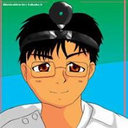Changes in radiocesium contamination from Fukushima in foliar parts of 10 common tree species in Japan between 2011 and 2013.
키워드
요약
Yearly changes in radiocesium ((137)Cs) contamination, primarily due to the Fukushima accident of March 2011, were observed in the foliar parts of 10 common woody species in Japan (Chamaecyparis obtusa, Cedrus deodara, Pinus densiflora, Cryptomeria japonica, Phyllostachys pubescens, Cinnamomum camphora, Metasequoia glyptostroboides, Prunus × yedoensis, Acer buergerianum, and Aesculus hippocastanum). The samples were obtained from Abiko (approximately 200 km SSW of the Fukushima Dai-ichi Nuclear Power Plant) during each growing season between 2011 and 2013, and the foliar parts were examined based on their year of expansion and location in each trees. The radiocesium concentrations generally decreased with time; however, the concentrations and rates of decrease varied among species, age of foliar parts, and locations. The radiocesium concentrations in the 2012 current-year foliar parts were 29%-220% of those from 2011, while those from 2013 fell to between 14% and 42% of the 2011 values. The net decontamination in the foliage was higher in evergreen species than in deciduous species. The radiocesium concentrations in the upper foliar parts were higher than those in the lower parts particularly in C. japonica. In addition, the radiocesium concentrations were higher in the current-year foliar parts than in the 1-year-old foliar parts, particularly in 2013. Thus, the influence of the direct deposition of the fallout was reduced with time, and the translocation ability of radiocesium from old to new tissues became more influential. Similar to the behavior of potassium in trees, Cs redistribution probably occurred primarily due to internal nutrient translocation mechanisms.


